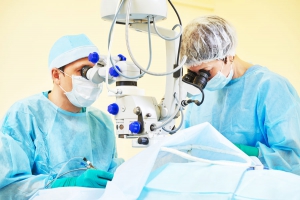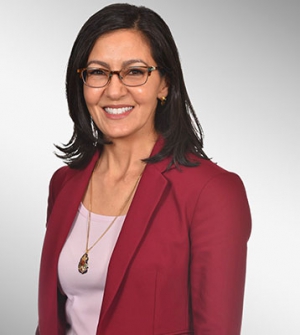Eyecare Links
Displaying items by tag: diabetes
Diabetes and Your Sight Page
Diabetes is a leading cause of vision loss in this country and around the world. This loss of vision is largely preventable with early screening and treatment. If you have diabetes, your body does not use and store sugar properly. High blood-sugar levels can damage blood vessels all over your body, including your eyes. Diabetes damages blood vessels in the retina, the layer which receives and transmits visual images to your brain. This damage is called diabetic retinopathy.
Types of Diabetic Retinopathy
Diabetic changes in the retina develop in stages, on a continuum. These stages are divided into early, nonproliferative, changes, referred to as background retinopathy, or BDR; and more advanced, proliferative, changes, or PDR.
In background retinopathy, or BDR, early damage to blood vessels leads to leaking of blood and fluid into the retina. If there is enough leakage the retina will swell, decreasing vision. As BDR progresses, vision may also be lost due to tissue damage from inadequate blood supply.
In more advanced or PDR, abnormal new vessels begin to grow in the retina. These vessels do not supply normal blood flow to retinal tissue. As the vessels grow they may cause severe bleeding, retinal detachment and glaucoma, all leading to significant loss of vision.
Diagnosis and Treatment
Regular exams by an ophthalmologist can detect early changes and help prevent vision loss. If significant disease is found, retinal photography and other tests may be necessary. Background retinopathy which threatens or affects vision with retinal swelling can be treated in the office with short laser treatments. This will greatly reduce the risk of visual loss. More advance disease is also treated with laser, often in multiple sessions. Bleeding or retinal detachment may require more involved surgery.
Vision Loss Is Largely Preventable
Early detection and treatment can reduce your risk of vision loss by a very large margin. With today's advanced diagnosis and treatment, only a small percentage of people who develop diabetic retinopathy have serious vision problems. Although strict sugar control reduces your risk of developing diabetic retinopathy, some patients with early or well controlled diabetes do develop retinopathy.
Early detection of diabetic retinopathy by an ophthalmologist is best protection against loss of vision.
When to Schedule an Exam
People with diabetes should see their ophthalmologist at least once a year. More frequent exams may be needed if retinopathy is detected.
Pregnant women with diabetes should schedule an appointment in the first trimester. Retinopathy can develop and progress quickly during pregnancy.
If you need new glasses, be sure your sugar is stable for at least several days before your appointment. Glasses that work well with an elevated sugar will not work well when sugar is stable.
Eye Surgeries & Procedures Article
Eye surgery has never been safer, more comfortable, and convenient. Toppino Eye Care features the newest technology and eye surgery techniques.
Dr. Toppino will take the time to listen to your concerns, provide you a thorough examination, and determine which eye treatment or set of eye treatments would best serve you. She will help you understand how the possible treatments will benefit you, and answer all of your questions. You will then be in a position to make an informed decision as to which eye treatment option(s) to pursue.
Toppino Eye Care also offers cosmetic procedures to enhance your look. Please call us for any questions.
- eye dr
- Eye Doctor
- eye dr florida
- eye fl
- LASIK Eye Doctors in Dora
- LASIK Eye Doctors in Clermont Florida
- Eye Specialists of Florida
- Eye care specialists
- lasik procedure
- cataract procedures
- Ophthalmologist
- eye care procedures in florida
- eye glasses
- florida
- FL
- 34711
- vision correction
- retinal surgery
- eye exams
- Central Florida
- South Lake
- Four Corners
- Lake County
- Astatula
- Minneola
- Groveland
- Ocoee
- Winter Garden
- optic
- optical
- optic nerve
- diabetes
Eye Surgeries & Procedures Article
Eye surgery has never been safer, more comfortable, and convenient. Toppino Eye Care features the newest technology and eye surgery techniques.
Dr. Toppino will take the time to listen to your concerns, provide you a thorough examination, and determine which eye treatment or set of eye treatments would best serve you. She will help you understand how the possible treatments will benefit you, and answer all of your questions. You will then be in a position to make an informed decision as to which eye treatment option(s) to pursue.
Toppino Eye Care also offers cosmetic procedures to enhance your look. Please call us for any questions.
- Cataract procedures
- LASIK procedures
- LASIK explained
- Frequently asked questions about LASIK
- Cosmetic procedures
- Other refractive procedures
- eye dr
- Eye Doctor
- eye dr florida
- eye fl
- LASIK Eye Doctors in Dora
- LASIK Eye Doctors in Clermont Florida
- Eye Specialists of Florida
- Eye care specialists
- lasik procedure
- cataract procedures
- Ophthalmologist
- eye care procedures in florida
- florida
- FL
- 34711
- vision correction
- retinal surgery
- eye exams
- Central Florida
- South Lake
- Lake County
- optic
- optical
- optic nerve
- diabetes
- Cosmetic Procedures
- Refractive Procedures
Cataract Procedures
Non-surgical cataract treatment
There is no nonsurgical treatment for a cataract. Preventative measures include wearing good ultraviolet (UV) blocking sunglasses to protect your eyes from the sun. Anti-oxidant vitamins may retard cataract changes.
Smoking accelerates cataract development and should be avoided. Some improvement with glasses is possible until the cataract becomes more advanced. Routine eye exams are important in watching for cataract formation that may be the result of natural aging changes, medicines, or general illnesses.
When should you have cataract surgery?
Cataract surgery is elective.It is done only when the person wants and needs it. Everyone has a different personality and different needs. Choose to have surgery when you cannot see to enjoy or perform to your satisfaction in jobs, hobbies, driving, athletics or outdoor activities. Some people are more demanding of their vision, and have surgery earlier than others who are not troubled by diminished vision.
Current cataract technology
Cataract surgery is fast, comfortable, and quite successful. Surgery can and usually is performed as outpatient surgery. Anesthesia consists of minimal sedation and a local block, usually by drops alone for comfort. The surgery usually takes 10 to 15 minutes. You return home shortly after and most normal activity can be resumed.
All surgical work is done through a self-sealing (sutures are not used) opening into the eye that is about the size of a pen tip. Lasers are NOT ordinarily used to remove Cataracts, rather the preferred method uses ultrasound energy.
The cloudy lens is removed with an instrument that loosens the cloudy lens protein (emulsifies) and gently vacuums it out of the eye. The instrument is called a phacoemulsifier and is not a laser. The phacoemulsifier uses ultrasound energy to loosen the cataract. Laser cataract removal is still experimental in the USA.
Once the cloudy lens is removed, a lens implant is necessary to restore the focus of the eye. The lens implant is folded and inserted through the same tiny opening into the eye.
The lens is placed through the pupil, behind the colored iris to replace the natural human lens. The lens is permanent and restores the focus of the eye.
Cataract Lens Implants
When the cataract, the cloudy lens, is removed, the haze is eliminated.
However, the focus of the eye must be restored. Intraocular lens implants are made of a type of plastic, acrylic or silicone.
The lens implants can be folded to permit placement inside the eye through the tiny incision already made for cataract removal. The power of the lens implant is usually calculated to give the best distance vision possible without glasses. Some patients prefer to have their implant so that they will not need glasses for near tasks instead.
Glasses may be necessary to sharpen vision for more demanding distance tasks like driving or for fine near tasks.
Advanced technology lenses are available to correct astigmatism and to restore both distance and near correction together. Multifocal lenses like Restor® lens have multiple points of focus in the lens to allow distance, intermediate and near vision. The Crystalens accommodating lens acts like a natural lens in the eye by changing its focus from distance to near as needed.
Cataract Lasers
From several weeks to several years after successful cataract surgery, a cloud may develop behind the lens implant.
This is called a secondary cataract and will blur vision much as the original cataract did.
The YAG laser is used in the treatment of secondary cataracts. The YAG laser makes a small opening in the cloudy membrane behind the lens implant. This requires only minutes and usually results in immediate vision improvement. The YAG laser is not used for the original cataract surgery.
Cataract Surgery Recovery
After surgery people usually go home and rest for the remainder of the day. The first day after surgery your doctor may perform a brief post-operative evaluation. Eye drops are used to promote healing. The eye must be kept clean and protected from injury. For one week a shield is worn over your eye at night to protect it.
You may usually resume most normal activities including work, shopping, driving, hobbies, and most athletic activities immediately. Activities or athletics requiring excessive strain, or that may cause sweat or dirt to come near the eye should be avoided for the first week. You should not go swimming or use a hot tub for 2 weeks after your surgery. Your vision may be quite good immediately or may require a week or more to clear. If glasses are needed, they are usually prescribed three to four weeks after surgery.
- eye dr
- Eye Doctor
- eye dr florida
- eye fl
- LASIK Eye Doctors in Dora
- LASIK Eye Doctors in Clermont Florida
- Eye Specialists of Florida
- Eye care specialists
- lasik procedure
- cataract procedures
- Ophthalmologist
- eye care procedures in florida
- 34711
- vision correction
- South Lake
- Lake County
- optic
- optical
- optic nerve
- diabetes
Mayssa A. Toppino, MD, F.A.C.S., F.A.A.O
Dr. Toppino, the medical director at Toppino Eye Care, graduated summa cum laude from Case Western Reserve University in Cleveland, OH. She received her Doctor of Medicine degree from The Ohio State University College of Medicine in Columbus, OH.
- eye dr
- Eye Doctor
- eye dr florida
- eye fl
- LASIK Eye Doctors in Dora
- LASIK Eye Doctors in Clermont Florida
- Eye Specialists of Florida
- Eye care specialists
- lasik procedure
- cataract procedures
- Ophthalmologist
- eye care procedures in florida
- eye glasses
- florida
- FL
- 34711
- vision correction
- retinal surgery
- eye exams
- Central Florida
- Four Corners
- optic
- optical
- optic nerve
- diabetes



